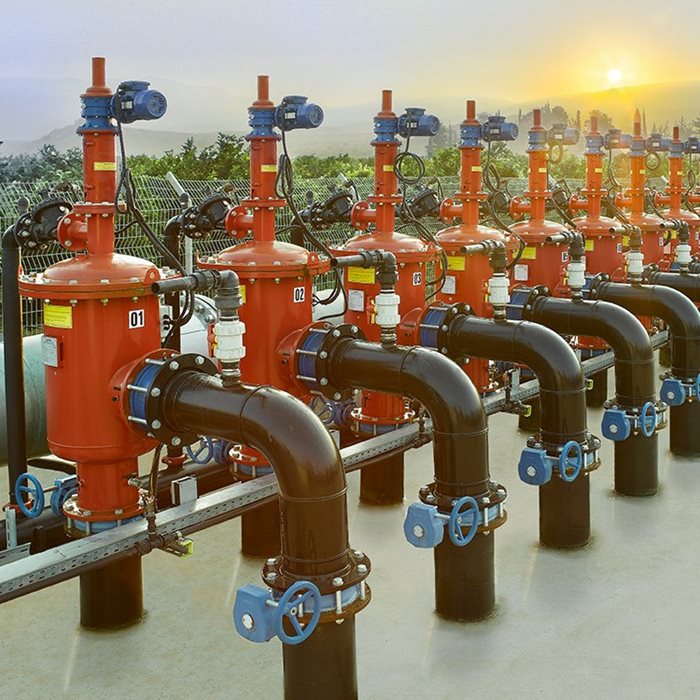
- Automatic flushing according to pressure differential and/or time
- Flushing does not interrupt downstream flow
- Minimal reject water volume allows excellent operation in flush mode
- Low cleaning water consumption (less than 1% of total flow)

Supporting your operations, from plant design expertise to equipment, parts and services for every stage of your process.
Are you looking to increase production, reduce risks, lower operating costs and enhance environmental performance? Then you are in the right place.
From the design and supply of products for a greenfield plant, to the addition of a single machine for an existing production line, we are here to help.
Rely on OEM experts because not all parts are created equal. Spare and wear parts built to perform.
Helping you get the most out of your equipment and processes.


Raw water enters from the filter inlet (1) and passes through the screen (2). Clean water flows through the filter outlet (3). The gradual dirt build up on the inner screen surface causes a filter cake to develop, with a corresponding increase in the pressure differential across the screen. A pressure differential switch (4) senses the pressure differential, and when it reaches a pre-set value the cleaning process begins.
Filter cleaning is carried out by the suction scanner (5), which spirals across the screen. The open exhaust valves create a high-velocity suction stream at tip of the nozzles that vacuums the filter cake from the screen. During the self-cleaning process, which takes approximately 30 seconds, filtered water continues to flow downstream.
The filter operation and cleaning cycles are controlled and monitored using a programmable logic controller (PLC). The PLC allows maximum flexibility in control options and has many additional features that can be incorporated according to customer need. During the self-cleaning cycle the PLC controls a solenoid that operates the exhaust valve by means of a hydraulic command or compressed air.
The self-cleaning cycle begins under any one of the following conditions:
Receiving a signal from the pressure differential switch
Time interval parameter set at the control board
Manual start
The control board also provides: